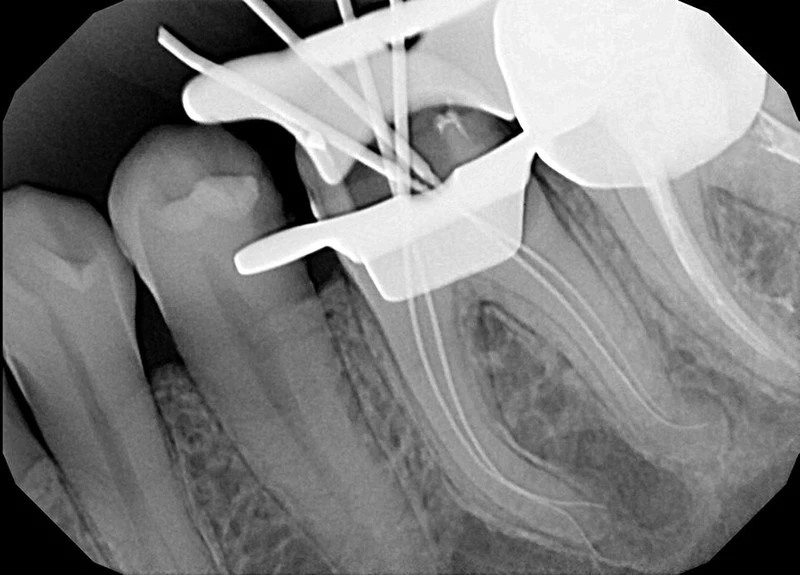How to Tackle Curved Canals in Endotontics?
Root canal treatment (endodontics) can be a challenging work when complex anatomy with root curvatures and hindered access for ideal preparation exist. The most common types of curved roots are fully curved canals and sharp curved ones at the apex or the middle portion; while double-curved canals are less common. Negotiating root curvature depends on the size of the canal and the degree of curvature. Preoperative assessment of such variations is essential to avoid failure and revision. In modern endodontic practice, it is easier to tackle curved canals with technologies such as rotary endodontic files/motors, 3D imaging and digital microscopy.

A skillful endodontic practitioner must be equipped with a set of instruments to enlarge the canal while keeping the original internal anatomy, and to create tapered preparation that optimizes irrigation and obturation. Above all, an endodontist must be able to determine the curvature of the root preoperatively through periapical radiographs for initial assessment and CBCT for a detailed 3D imaging of the root and the surrounding structures. Periapical X-rays can produce false-negative images which have the risk of not showing bucco-lingual curves; while CBCT show the size and extent of the roots and curvatures.
CBCT also have the advantage of determining the radius of the root and the angle of curvature. The smaller the radius, the greater the curvature and more complex treatment. A root curved within 5 degrees is considered straight, while a curve between 5 and 20 degrees is considered moderate and more than 20 degrees is classified as a severely curved.
Management of apical curvature has long been considered challenging due to the previous experiences with perforation, ledges and teardrop foramen. The major recommendation for negotiating such curvature is creating a straight-line access and using small-size K files (08 or 10) into the curve; then a chelating agent (EDTA) and copious sodium-hypochlorite irrigation are used for chemical preparation. Finally, the canal must be prepared with flexible files in a light, passive movement to follow the curvature.

Rotary files are excellent tool for managing mid-canal curvatures. Middle curvatures are more difficult to deal with and need adequate access and coronal 1/3 preparation to deliver profound irrigation. Proper instrumentation can be achieved using precurved files (gently bent files) to create a glide path before using the rotary NiTi files for cleaning and shaping. This technique helps to avoid mishaps during canal preparation during mechanical instrumentation. It also helps in providing a tapered design without modifying the original position.
Rotary endodontic motors are based on providing balanced forces with different instrument motions during canal preparation. The forces do light pushing of the rotary files in an inward direction. The motions are designed as clockwise rotation and anti-clockwise movement to ensure removal of the debris with minimal pressure. In curved canals, the files tend to move away from the constriction zone toward the more bulky area of the root structure to avoid overcutting the outer curve in the apical region and the inner curve of mid‑root.
Double-curved canals (S-shaped canals) need combination approach between CBCT, microscope and rotary files. CBCT images help to guide the files in their reciprocating motion for optimal shaping effects without ledges. Microscope can help in viewing blockage areas that require special motion or irrigation method.


